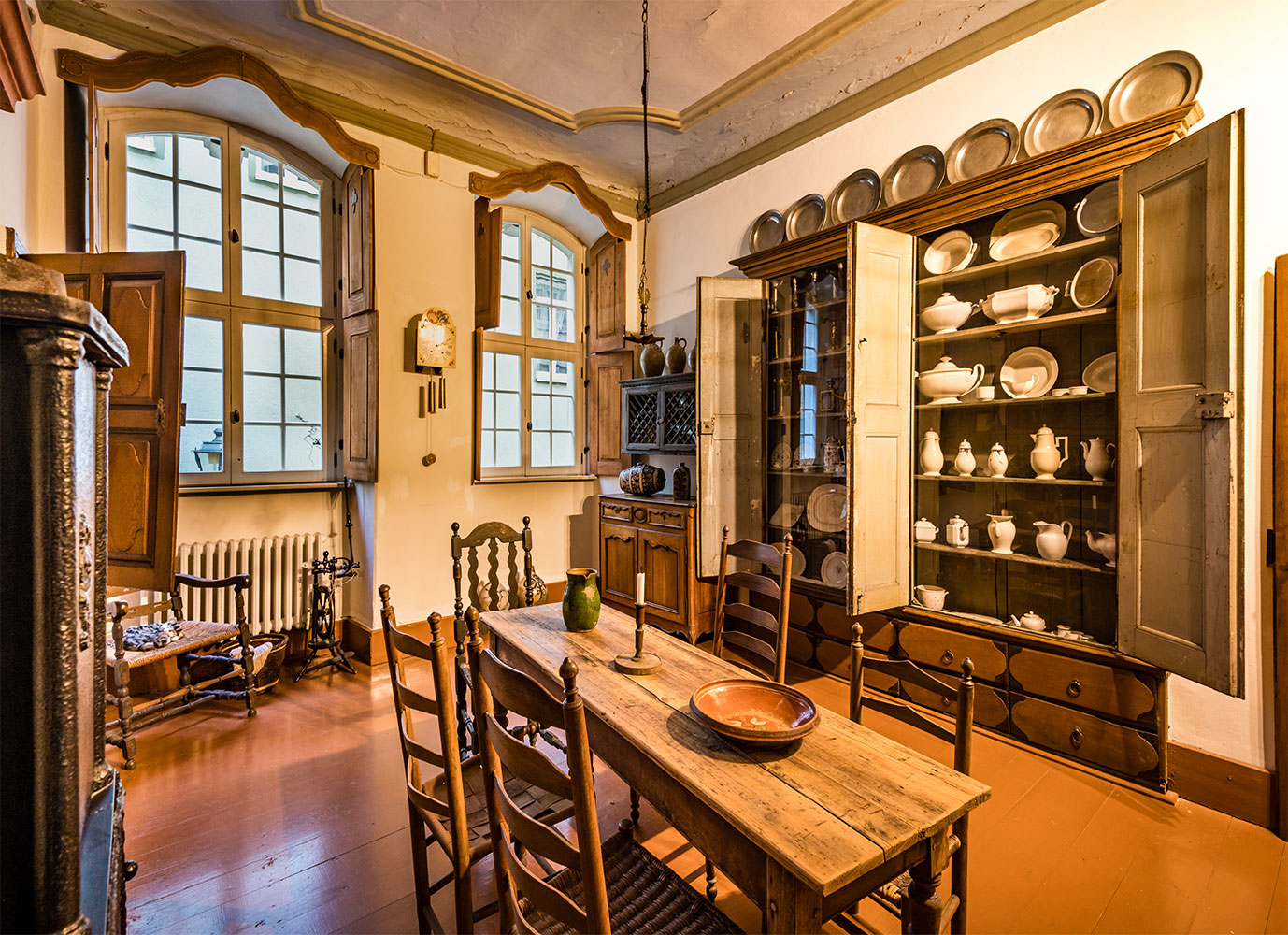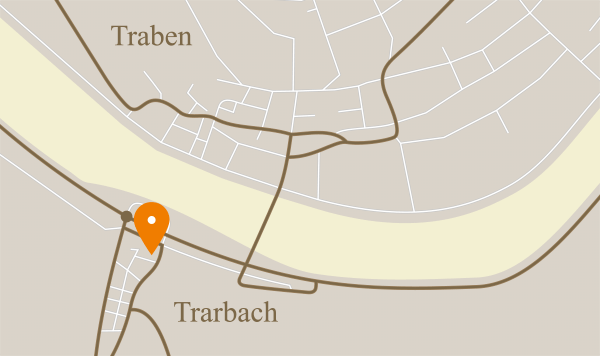ROOM 1
Servants’ Hall
This room owes its name to the big iron plate imbedded in the corner of the wall which is also the rear wall of the open chimney of the adjoining kitchen. As the fire in the fireplace should never go out, this was the only heated room in the whole house, especially in winter, originally it served as the dining room of the Böcking family. Signs for this usage are the stuccowork of the ceiling and the original wall-chests in baroque style in which the daily table-ware was kept. The small wall-chest on the right of the “Taken” corner used to keep the cutlery.
The wall-chest on the right shows stone ware from the 19th century (on the third shelf from the top) by Nicolas Villeroy, manufacturer from Wallerfangen (“Vaudrevange”). In 1836 he merged with Jean-Francois Boch, this international company is still existing today.
The small wall-chest on the right of the iron plate was especially made to keep the cutlery.
Nowadays this room is furnished as the servants’ hall. In former days half a dozen maids and servants were responsible for the well-being of the owners of the house. The big table in the middle of the room is the one where the servants had their meals and were they were also given daily instructions.
In the middle of this room you can see one of the few historical lamps in this museum. It is a so-called Sabbath lamp made of brass (in the Middle Ages it was also called “Jewish stars”) and it came originally from a Jewish household.




